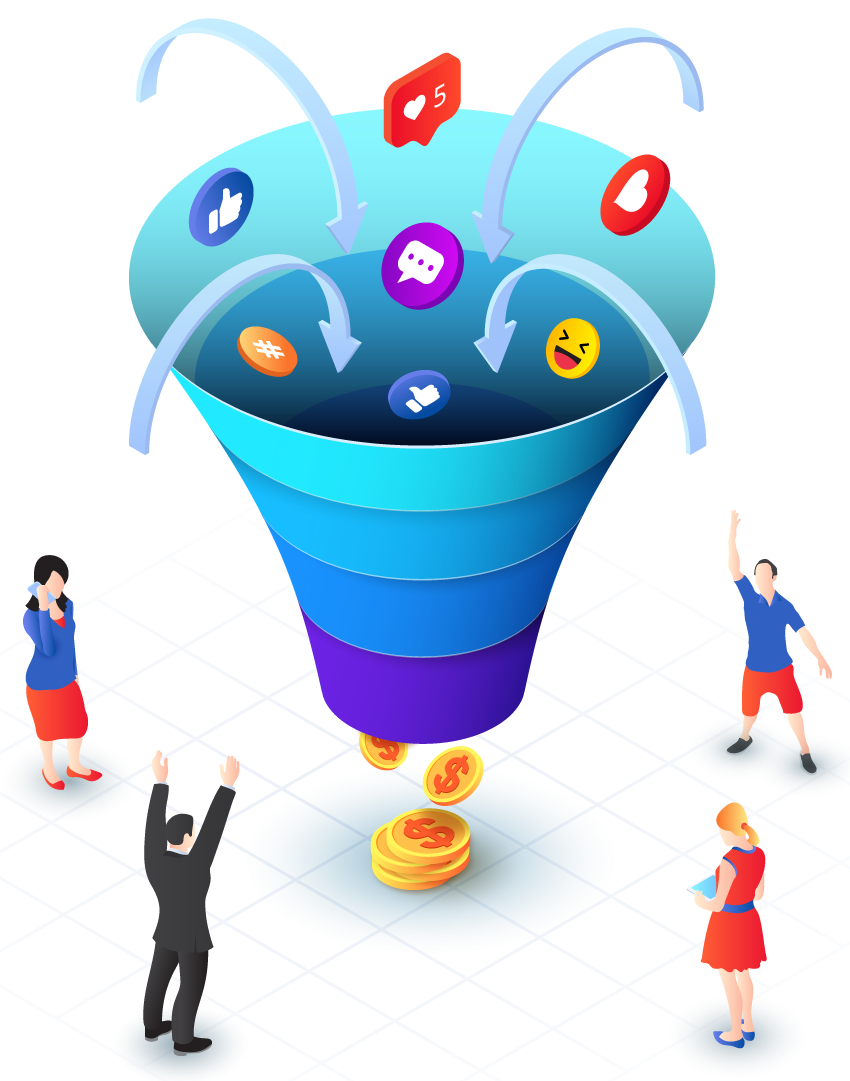How Sales Funnels Enhance Customer Engagement
A sales funnel is a strategic journey that enables businesses to connect with customers and nurture them into repeat purchasers. In an age of limitless information and overwhelming choice, the sales funnel is more vital than ever.
Its structured process of capturing, qualifying, nurturing, and closing enables businesses to maximize customer engagement and revenue.
At the widest point of the sales funnel, prospects become aware of your product or service through different marketing channels such as advertisements, social media campaigns, or blog posts.
To capture attention, businesses must create compelling messaging that piques interest and highlights key features and benefits. For example, Nike leverages teaser campaigns, influencer collaborations, and behind- the-scenes content to generate buzz for its sneaker releases.
As prospects engage in the awareness phase, they begin to gain a deeper understanding of your product or service and its value. To facilitate this, businesses can educate them by providing how-to videos, blogs, or ebooks.
Additionally, they can provide social proof through testimonials or case studies. Once prospects are ready to convert, they must be provided with a clear and easy-to-understand purchasing path.
For example, a website with detailed FAQs and an online chat feature are both effective tools to facilitate conversions.
Once leads are converted into customers, they can be nurtured through personalized experiences. A good way to do this is by offering incentives like special promotions or free trial periods. Depending on the nature of the business, incentives can also be delivered through targeted email campaigns.
The bottom of the sales funnel is all about making your product or service "sticky, " meaning that it becomes hard for users to stop using it. A good way to increase retention is by adding functions or steps that make your product more useful the more you use it.
For example, by increasing its storage space or allowing for more customization options, your product can be made to feel like an indispensable part of the user's life.
Regardless of whether the business is B2C or B2B, it must constantly strive to improve its customer experience to keep pace with competitors. This can be achieved by tracking metrics, analyzing data, and keeping a pulse on industry trends. This will enable the business to adjust its sales funnel and stay relevant in a continually changing marketplace.
While the adage "the devil is in the details" holds true, a well-constructed sales funnel must account for the possibility that prospects will drop out or face obstacles.
By identifying the reasons for these issues, the business can take proactive measures to address them. For example, if a prospect drops out because the sales process is too long or complicated, the business can work to streamline its processes or provide more support.
If a prospect stops engaging because of lackluster communication, the business can improve its messaging or add more training resources. By addressing any hurdles that arise, the business can ensure its customers' satisfaction and retain them along the funnel's entirety.

Free Training video
How To Transform Your Online Business with Our Universal Sales Funnel Template
My Recent Posts
All-in-One Sales Automation Platform
Check out my recent post on all-in-one sales and marketing tools and what I think of it.
Sales Funnels
Check out my recent post on sales funnels and what I think about them. Are they still worth it?

Helping You Navigate the Digital Marketing Journey
For years, I searched for a way to break free from the rigid corporate structure, seeking the flexibility to work on my own terms and spend more quality time with family and friends. Like many, I ventured into digital marketing with the hope of financial freedom, but the journey wasn’t easy. After countless courses, software trials, and struggles, I finally found a real, no-frills approach that worked. Now, I’m here to share the tools and strategies that helped me succeed, so you can do the same.
[Masood Mostafaee]
©Copyright [2025] [Web Marketing Edge]
[120 Charlton Rd STE 2, #1015 ]
[Sturbridge Ma 01566]
